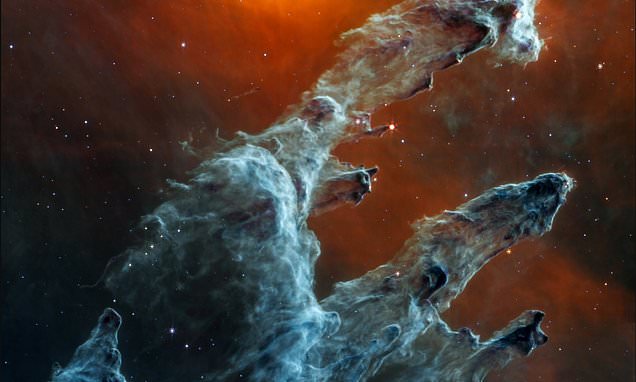A photograph of the Pillars of Creation was taken by NASA’s James Webb Space Telescope, and it has a very peculiar appearance (JWST). In the picture, the dusty columns give the impression of a spectral hand extending into the far reaches of space. They are located seven thousand light years from our planet.
The terrifying image was captured using mid-infrared light, which obscures the bright stars so that the only thing that can be seen is the dangerous dust moving around. This offers a fresh perspective on a well-established region of the cosmos.
Nobody has ever seen the Pillars of Creation before, so this is the first time anyone has seen how dusty some parts of them are. The Pillars of Creation were formed more than five million years ago and were frequently seen encircled by bright stars when they were first discovered.
The picture does not show any stars that are shining brightly, but the glowing edges of the dust cloaks indicate the locations where new star systems are beginning to form.
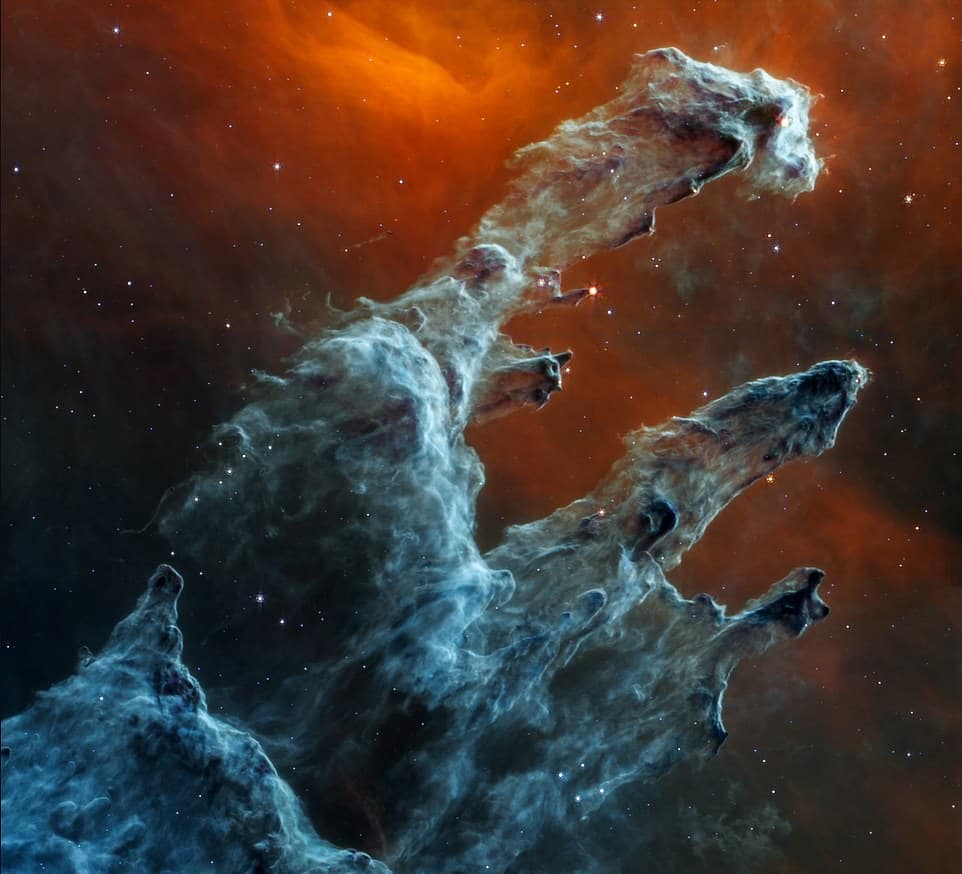
The mid-infrared light instrument (MIRI) (MIRI) aboard the James Webb Space Telescope is equipped with both a camera and a spectrograph. The spectrograph works by first filtering light according to its frequency and then taking a picture of the resulting spectrum.
MIRI also has sensitive detectors that allow it to see objects in the Kuiper Belt as well as redshifted light from faraway galaxies, newly forming stars, and barely visible comets.
This particular kind of technology has never been used for anything else but the JWST.
‘Why does mid-infrared light set such a somber, chilling mood in Webb’s Mid-Infrared Instrument (MIRI) image?’ NASA shared in a statement.
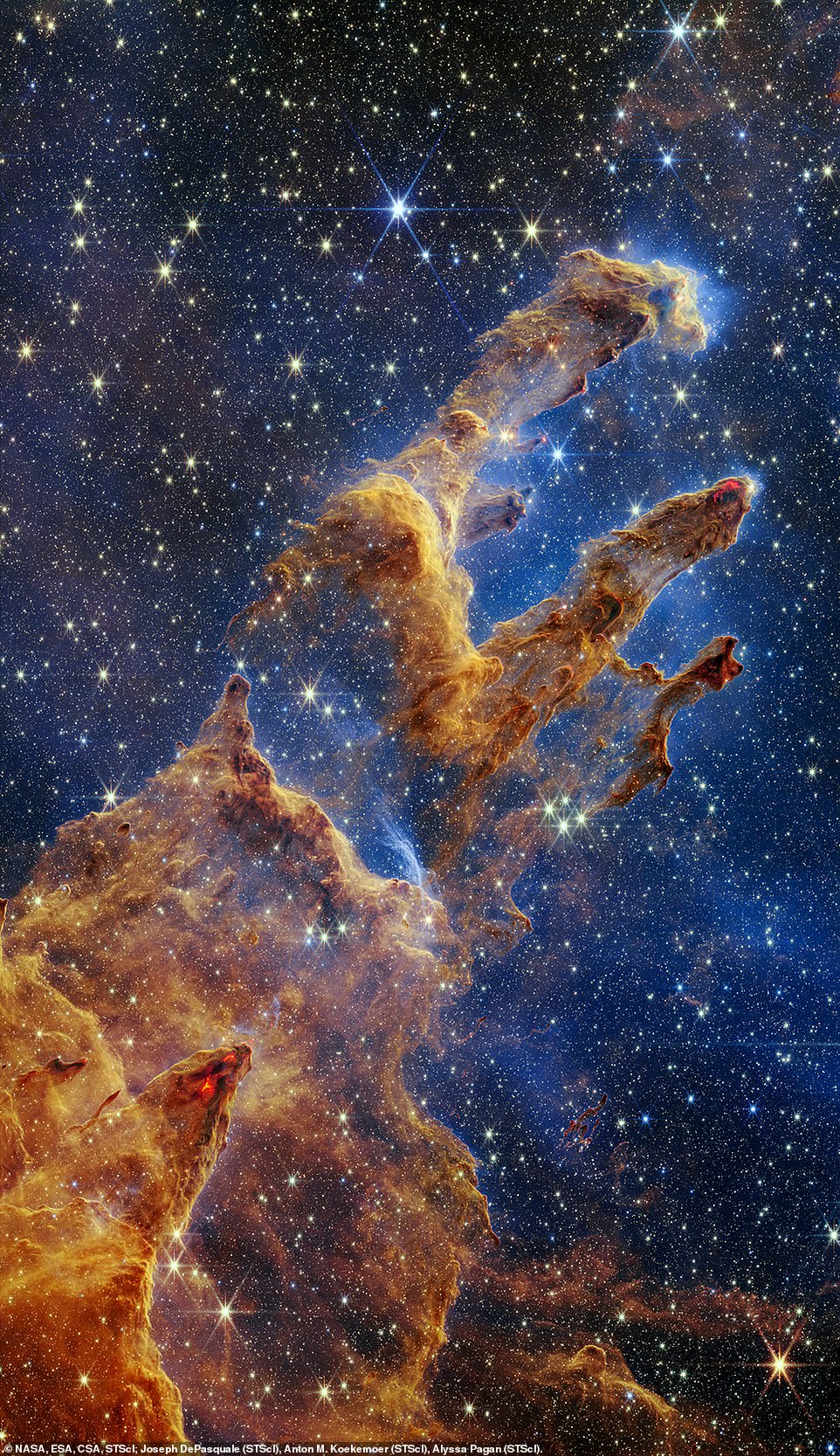
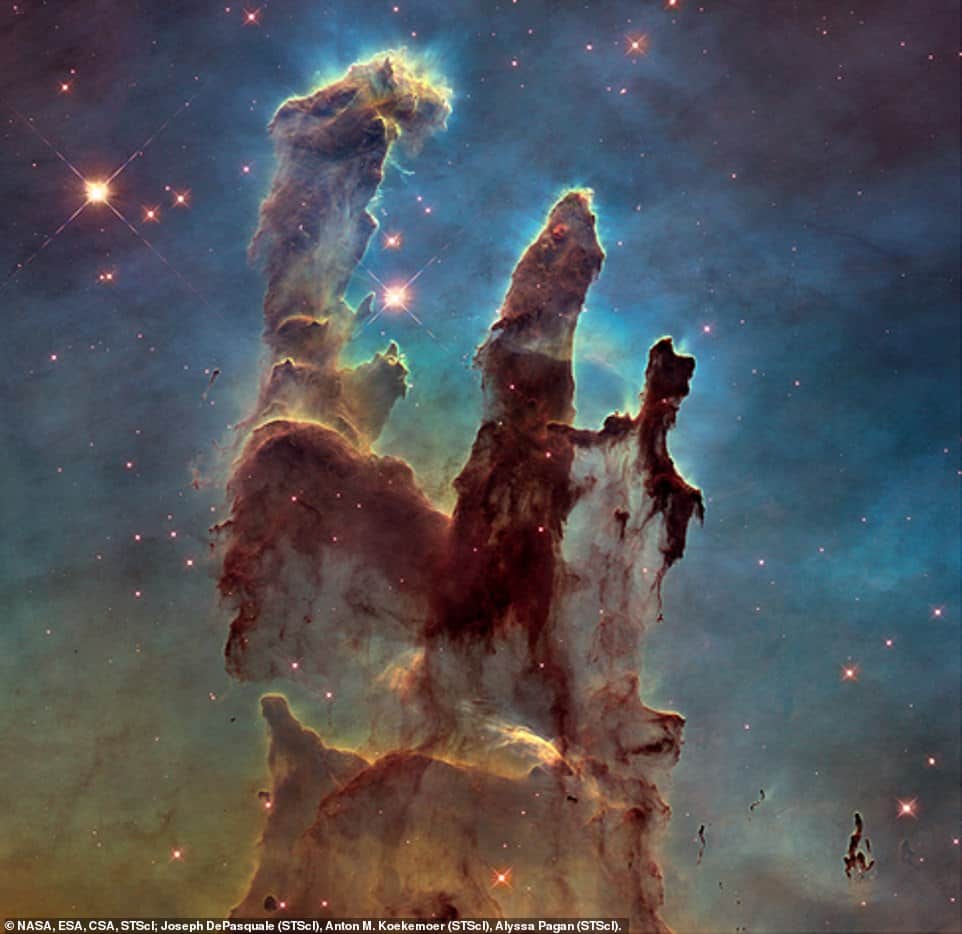
‘Interstellar dust cloaks the scene. And while mid-infrared light specializes in detailing where dust is, the stars aren’t bright enough at these wavelengths to appear. Instead, these looming, leaden-hued pillars of gas and dust gleam at their edges, hinting at the activity within.’
This picture was taken by James Webb earlier this month, and it reveals that this region is the birthplace of tens of thousands of stars. This discovery was made possible by an image that showed the Pillars of Creation with more detail than any other image the human eye has ever been able to see.
Astronomers will be able to count the number of newly formed stars and measure the amount of gas and dust in the region with a great deal more precision with the assistance of the detailed picture that was provided by JWST.
This is due to the fact that it is now possible, for the very first time, to see the dust and gas clumping together. Additionally, it is possible to see extremely clearly groups of stars that are still in the process of forming; some of these groups still have dust covering some of their members.
The image was captured by the WST’s Near-Infrared Camera, also known as NIRCam. The sensitive sensors in this camera can pick up the light from the oldest stars and galaxies in the universe.
In order to accomplish this, the telescope examines the amount of time required for light to travel through space. This is accomplished through the utilization of a diverse spectrum of infrared light. The ability to “see” into the past is granted to the telescope as a result of this.
The image that Hubble took in 2014, on the other hand, depicted the stars as glowing red spheres. The NIRCAM was able to detect the stars in space as the glimmering lights that they are.
It is now possible to see more of the red stars that are still forming because the thick, dusty brown pillars have become less opaque.
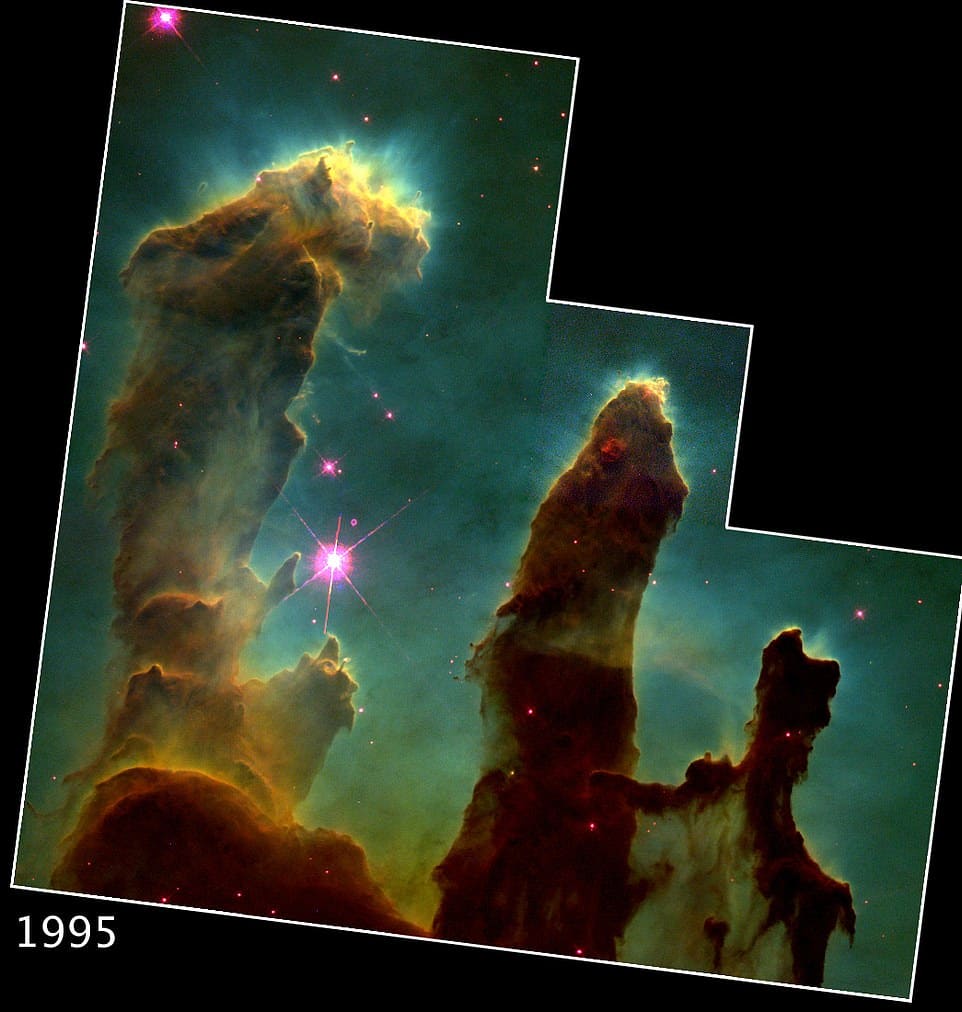
In addition, the JWST observed lines that zigzagged upward and downward along the perimeters of certain pillars. These pillars are stars that are still in the process of forming in the gas and dust that is present in the area.
NASA said in a statement that it is common knowledge that young stars sometimes send out jets that move at very high speeds and hit clouds of matter, like these dense pillars.
Bow shocks are waves that develop behind a boat as it travels through the water. A collision could result in their occurrence under certain circumstances.
‘The crimson glow comes from the energetic hydrogen molecules that result from jets and shocks,’ NASA shared.
This is made abundantly clear in the second and third pillars, working their way down from the top. The NIRCam picture looks like it’s almost beating with all of their activity.
According to the estimates of scientists, these stars have only been around for the equivalent of at most a few hundred thousand years.
There is a group of stars known as the Pillars of Creation, and you can find them in the constellation Serpens.
Simple telescopes like those typically found in backyards are able to provide a clear view of the young, blazing stars that make up the NGC6611 star cluster, which is located in this constellation. It has shaped and illuminated the gas and dust that is all around it, which has resulted in the formation of a massive crater and pillars that are each several light-years long.
In 1995, Hubble took a picture of the pillars that appeared to show what appeared to be the birth of new stars inside of them. Because of the dust, Hubble’s picture in visible light was unable to show what was happening on the inside or provide evidence that new stars were being formed.
After that, NASA sent Hubble back for a second look, which gave scientists a chance to compare the two photos and figure out what had changed.
Changes that looked like a jet taking off from one of the new stars found inside the pillars were spotted by astronomers in a particular region of the pillars.
Because the jet expanded by sixty billion miles in the period of time between observations, this indicates that things inside the jet are moving at a speed of approximately 450,000 miles per hour.


